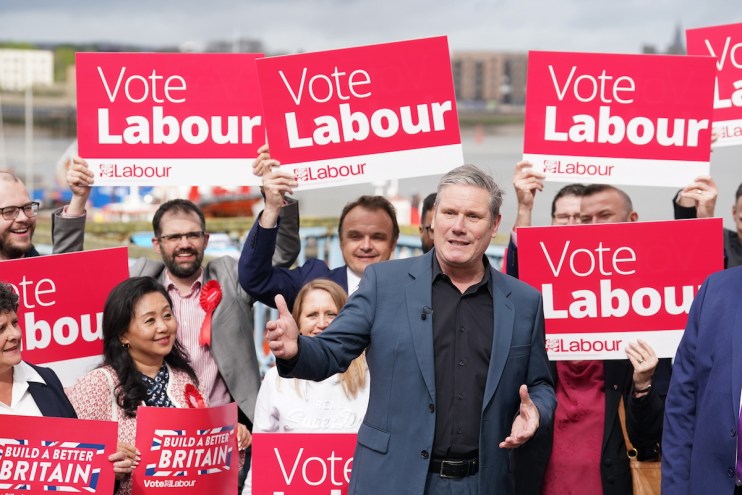Local elections analysis: Do results suggest fear of complacency was misplaced?

Poll leads can be a tricky thing for opposition parties, as Labour has shown in recent weeks.
Lean in too far and risk appearing complacent. But downplay it too much, and you could fail to capitalise on a popularity boost.
What everyone – from activists to frontbenchers – really want is cold, hard evidence of the public mood.
This morning’s initial set of local election results will have provided – at least an indication of – the proof they were waiting for.
Headline outcomes so far, with just shy of three quarters of councils across England yet to declare, are of a gloomy night for the Conservatives.
Expectation management was out in full force ahead of the polls opening – with Tory chiefs insisting up to 1,000 seats could be lost in a worst-case scenario.
But the hope is always that reality will prove far better – and it’s not yet clear if that’s likely.
Labour are jubilant after taking key councils in Medway, Kent; Stoke-on-Trent, Staffordshire; and Plymouth, Devon, with Tory losses in commuter belt councils also making headlines.
Breaking cover with a pre-6am statement on their “confidence” of winning the next general election, suggests the leadership are popping the figurative champagne at Labour HQ.
And national campaign coordinator Shabana Mahmood did little to dampen the mood on the breakfast TV sofas, beaming with barely veiled glee.
Resurgence in ‘red wall’ and Brexit-voting wards, as well as shifts in the Tory shires, indicate early signs of a feared ‘pincer’ movement squeezing Conservative support on both sides.
If replicated in 2024, with Leave voters returning to Labour in cities like Stoke, and the ‘blue wall’ and Remain switching to the Lib Dems in places like Windsor, there could be trouble.
Downbeat Tory figures are already muttering about Boris Johnson’s election winning abilities, and the Conservative Democratic Organisation (CDO) formed in the wake of his resignation will meet next week.
It boasts high-profile backers on the party’s right, Priti Patel, Jacob Rees-Mogg and Nadine Dorries, among its membership.
While the party’s split over housing targets is emerging as a potential key fault line – with MPs blaming both their scrapping and their existence for today’s poor showing.
Labour – and the markets – will argue economic turbulence, leadership ructions and perceptions of sleaze and scandal have dogged Tories in recent months.
Suggestions Sunak’s personal connection to voters – distanced as he is from the effects of the cost of living crisis – are also being made.
We’re still a long way off any certainty, with 169 councils still to declare. But after 13 years in power, today is the strongest test yet of Starmer’s claim that voters are ready for a change.
Key in determining that is the national picture of the vote share, with projections on how results could look if the entire country had voted expected to emerge later on today.
As polling guru John Curtice puts it, the “$64,000 question” is whether the winner of the next election can secure a majority or if we’re facing a return to the days of coalition government?
The potential for a hung parliament is still “uncertain”, he told the Today programme.
But among everything we don’t yet know, what we have learned this morning, is that, for Labour, leaning into those poll leads, perhaps wasn’t so complacent after all.
